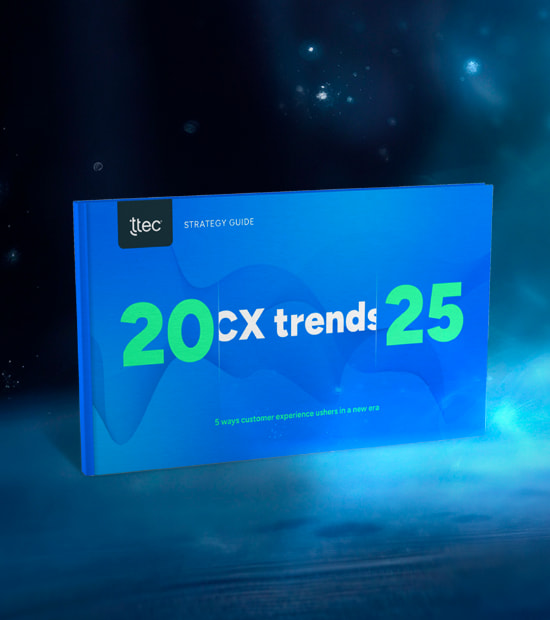It's time for retail banks to rethink their customer strategy investments. Customers are more in control of the relationship than ever, often calling the shots on how and when they wish to access their accounts, perform transactions, and interact with bank personnel. As if that weren't game-changing enough, the widespread proliferation of handheld devices such as smartphones and tablet computers is revolutionizing the way financial services are being delivered.
No longer is a surly bank teller the primary touchpoint between a financial institution and its customers. Rather, these days, remote retail distribution channels such as the Internet, kiosks, and mobile devices are enabling retail banks to sell their products and services to an ever-widening range of customers.
Additionally, as bank branches continue to proliferate and concerns regarding the security of Internet channels have abated, customers' almost interchangeable use of multiple channels is becoming the norm. This shift has given way to an enormous challenge for today's leading financial institutions: how to make multiple customer experience channels work together harmoniously.
Bottom-line benefits of a multichannel strategy If executed successfully, a fully integrated multichannel customer experience can help retail banks optimize costs on more expensive channels while building deeper and more significant relationships with customers.
But that's not all. By carefully integrating Web-based and remote channels with contact centers and branch locations, a financial institution can significantly boost its bottom line. In fact, during a Peppers & Rogers Group engagement at a large bank with approximately 10 million customers and 1,000 branches, we observed that customers using alternative distribution channels are more profitable for the bank. Retail banking customers using alternative delivery channels are 2.6 times more profitable than non-ADC customers; private banking ADC customers are 1.3 times more profitable. In addition, retail customers using these channels own 2.5 more products than the customers who use only the branch. For private banking customers, it's twice as many products.
And profits only promise to improve as the workforce becomes overrun by Millennials—tech-savvy, always-connected twenty-somethings. In fact, according to Harvard Business Review, in four years Millennials will account for nearly half the employees in the world. By offering this increasingly ubiquitous demographic rich, interactive Web-based experiences, retail banks stand to better satisfy customers' needs and extend their lifetime value.
Embrace remote channels—or perish
To underscore the importance of creating a multichannel customer experience, one needs to look no further than the risks inherent in poorly managed channels. Inconsistent communications, increased customer churn, lost sales, diminished profits—they are only a handful of the repercussions of managing multiple channels separately. In fact, according to the J.D. Power and Associates 2010 U.S. Retail Banking Satisfaction Study, poor customer service is cited as the top reason customers have switched banks this year (37 percent, versus 29 percent who switched banks due to high fees).
No wonder retail banks are now at a critical juncture: either seize this timely opportunity to integrate Web-based and remote channels into a multichannel customer experience strategy based on customer value, behavior, and needs or watch your assets (i.e., customers) leave for competitors that have. Doing so may seem daunting, but there are some hard and fast rules that any bank can use to optimize its multiple distribution capabilities to better serve customers and gain a distinct competitive advantage.
Creating a successful multichannel customer experience strategy calls for investments in three essential areas:
• People: Finding new ways to motivate bank employees to operate in a way that enhances the multichannel experience for customers.
• Technologies: Identifying technology systems and software capable of supporting multichannel integration.
• Processes: Carefully assessing a bank's distribution capabilities and its overall multichannel maturity.
• People: Transforming associates into evangelists As an increasing number of retail banks turn their attention to selling products and services via remote channels such as smartphones and kiosks, the virtual relationship manager is stepping into the spotlight as a key component of a bank's multichannel customer experience strategy.
It's easy to understand why. Virtual relationship managers are responsible for maintaining and strengthening relationships with typically high-value customers who wish to bank remotely but still crave some face-to-face interaction. Rather than beef up brick-and-mortar branches with highly qualified—and highly paid—customer service representatives, banks are increasingly relying on contact center–based virtual relationship managers to cater to customers' channel preferences while optimizing a bank's cost-to-serve ratio, a win-win situation for both bank and client.
The evolving financial services landscape is also redefining the role of traditional bank tellers. While institutions continue to build branch networks, technologies such as computer prompts with suggestions for "next best" products are upping the ante on what's expected from tellers in terms of personalized and sales-oriented banking services. Consequently, this shift from human-guided service to transactional banking is demanding that tellers acquire a new set of skills as knowledgeable sales and relationship managers.
There is one common denominator linking virtual and traditional relationship managers. Banks with multichannel customer experience strategies must encourage these frontline workers to operate in a way that enhances customer satisfaction, regardless of channel. For example, some bank tellers are being asked to increase customer stickiness by reciting an on-the-spot sales script delivered to their computer desktop via a CRM suite. Furthermore, many of these relationship managers are being asked to encourage customers to use remote channels such as mobile apps and Web-based self-service portals.
Promoting remote channels is a relatively new responsibility for bank employees, especially for contact center representatives whose job has long been to simply field customer calls as fast and efficiently as possible. Requiring associates to develop a fresh set of skills related to sales means, in part, providing training on guiding customers to new channels. And that's creating huge changes in the way companies are evaluating their contact center associates' performance. Forget about traditional metrics such as call handling or time-to-resolution. Rather, a multichannel customer strategy demands that banks create new key performance indicators (KPIs), such as product sales for contact center associates, as well as deploying a reward system that compensates sales achievements.
Technologies: Deploying software and systems for seamless integration Properly trained employees are only part and parcel of a fully integrated multichannel customer experience strategy. Fostering deeper relationships with customers takes a significant investment in technology. Twenty years ago purchasing concert tickets online or using your mobile phone to pay a parking ticket would have belonged in the pages of a sci-fi novel. But these days retail banks are heavily investing in the promotion and development of new high-tech channels, from voice-activated ATMs to mobile payment apps.
Take Bankinter of Spain, for example. The leading Internet bank and brokerage firm in Spain launched video customer service on its website that lets visitors communicate with associates via an intelligent routing system while real-time customer data is provided to the bank representatives. By blending a distinctly human touch with cutting-edge technology, Bankinter is using a remote channel to increase sales conversion rates and sales volume while still delivering top-notch customer service.
Driving the widespread adoption of financial services–related technology such as Web-based video call services are a number of factors including enhanced convenience, reduced costs, increased security measures, and more user-friendly features, like larger display screens. Yet challenges remain: Because many financial institutions operate a hodgepodge of both legacy and best-of-breed systems, it can be difficult to cull data from multiple channels for a holistic, 360-degree view of a customer.
Fortunately, many banks are discovering that investing in technology systems such as customer relationship management software can ease the migration to a multichannel platform. Other technologies capable of supporting multi-channel integration include mobile apps, video conferencing, virtual teller applications, voice recognition software, scanning systems, context-aware computing, and social networking platforms.
One of the most promising technologies to help banks better integrate multiple channels is predictive analytics. By keeping tabs on customer transactions, purchasing patterns, and historical behavior, predictive analytic tools enable banks to forecast customers' current and future preferences. Using this in-depth customer insight, banks can reach out to customers in the channel of their choosing and thereby enhance customer satisfaction.
Processes: Ensuring that you measure up
Financial institutions looking to create a remote sales strategy based on customer value must develop a multichannel maturity model that accurately assesses an organization's true distribution capabilities. By analyzing customer behavior, channel utilization, and cost-to-serve goals, a bank can better determine how to make the most of multiple channels, such as kiosks and retail branches, to optimally serve customers.
Among the components requiring evaluation are a bank's fulfillment process, channel performance, and integration readiness. Once these variables are carefully considered, an accurate snapshot will form of a bank's distribution capabilities and its overall multichannel maturity. From there, a bank can decide how best to use its distribution capabilities to satisfy customers, and how it can go about fulfilling customers' unique needs, regardless of channel.
The changes in business processes don't stop there. Not long ago a bank would gauge the success of its multichannel customer strategy by the number of low-value customer transactions it was able to migrate to less costly channels. But those days are long gone as more and more financial institutions recognize the potential for remote channels, such as the Web and mobile devices, to market products and services. For this reason, many banks are beginning to incorporate two new critical KPIs into the multichannel customer experience framework: the amount of sales generated via a remote channel, and the number of active customers who use a particular channel.
The future is now
The continued expansion of bank branches is proof that customers still crave face-to-face interaction with financial institutions. But brick-and-mortar entities are slowly taking a backseat as more and more banks discover the potential for remote channels, such as the Web and mobile platforms, to drive sales and cut operational costs. It would be a mistake, however, for banks to prioritize these disparate channels. Instead, the most profitable and forward-looking financial institutions are embracing a multichannel customer strategy that combines people, technologies, and processes to serve customers appropriately, from branch to browser.

















